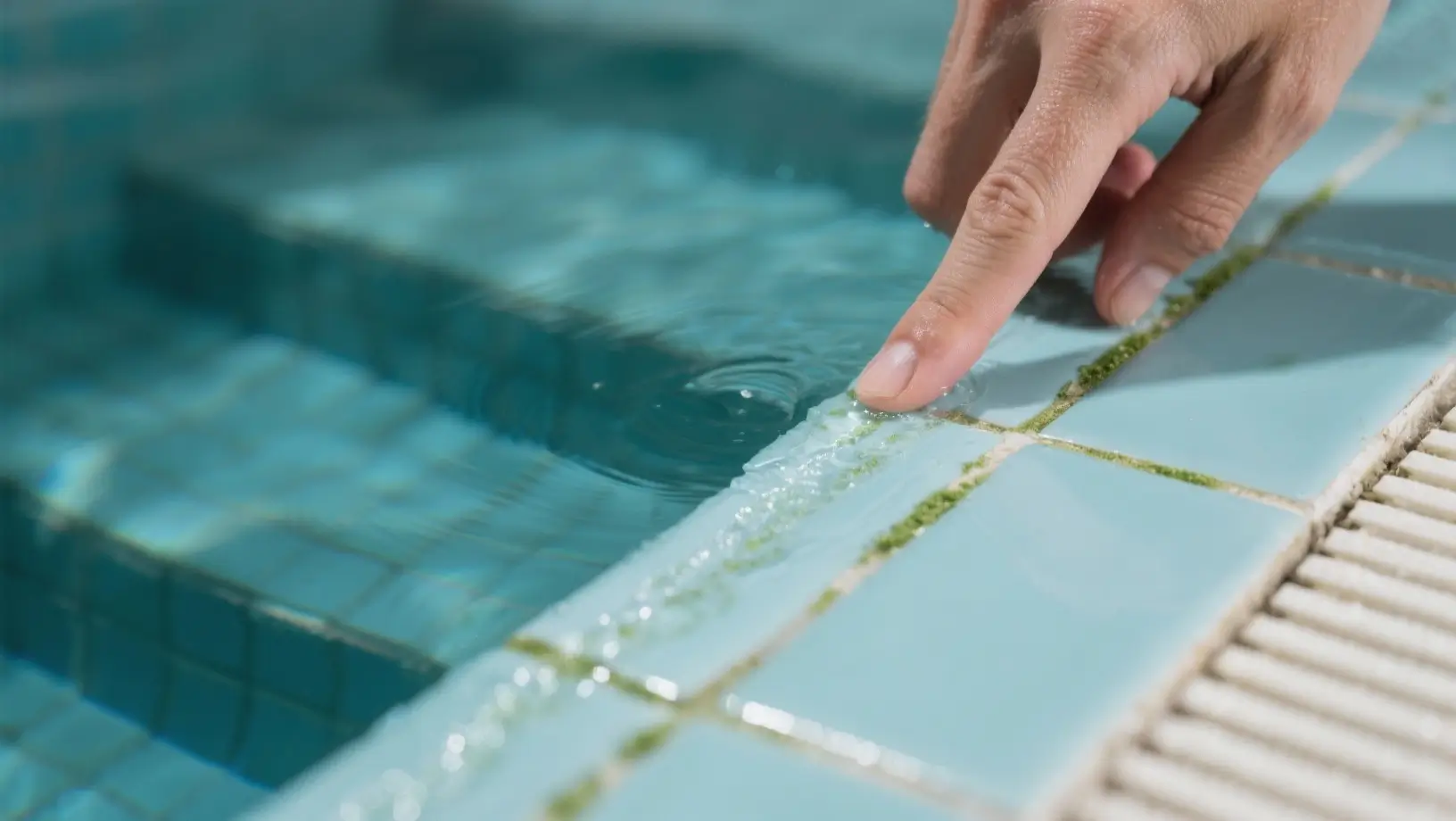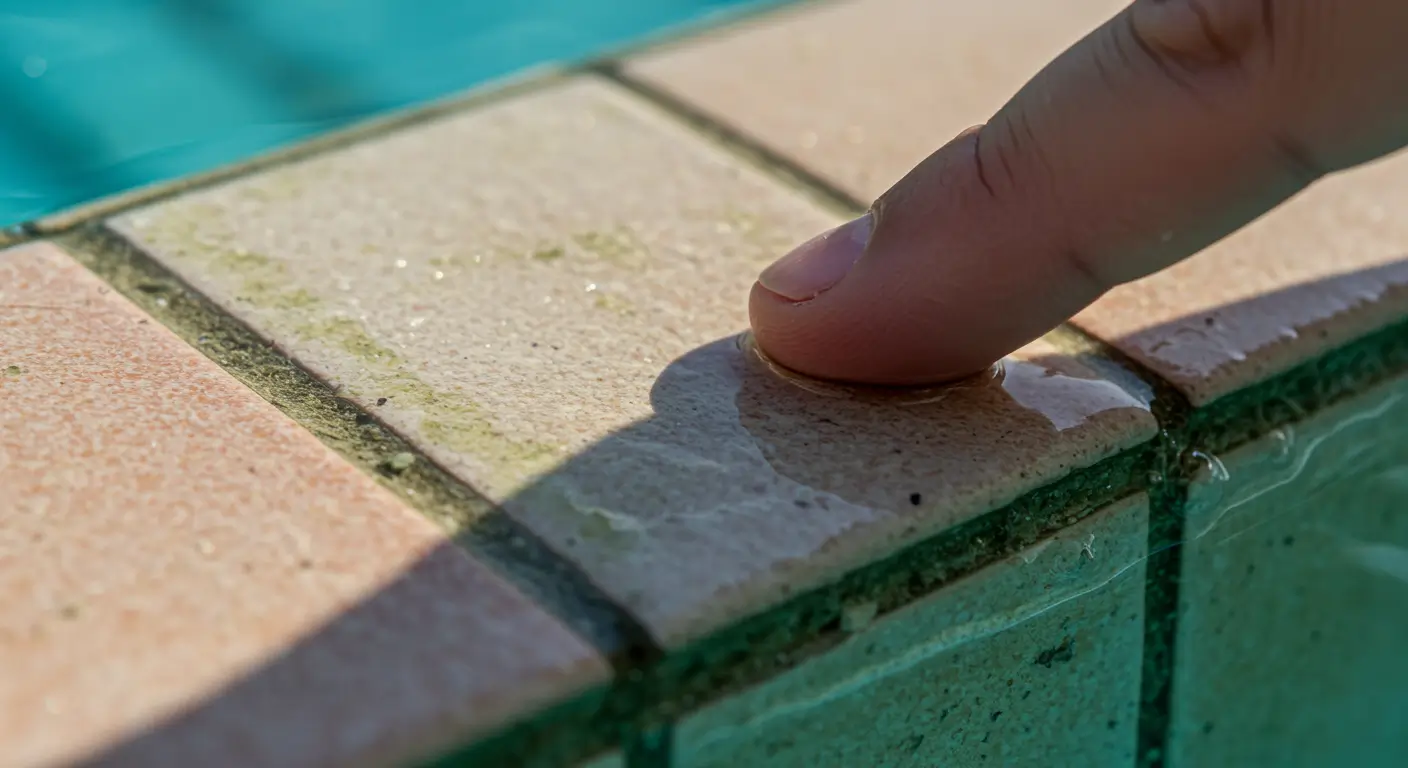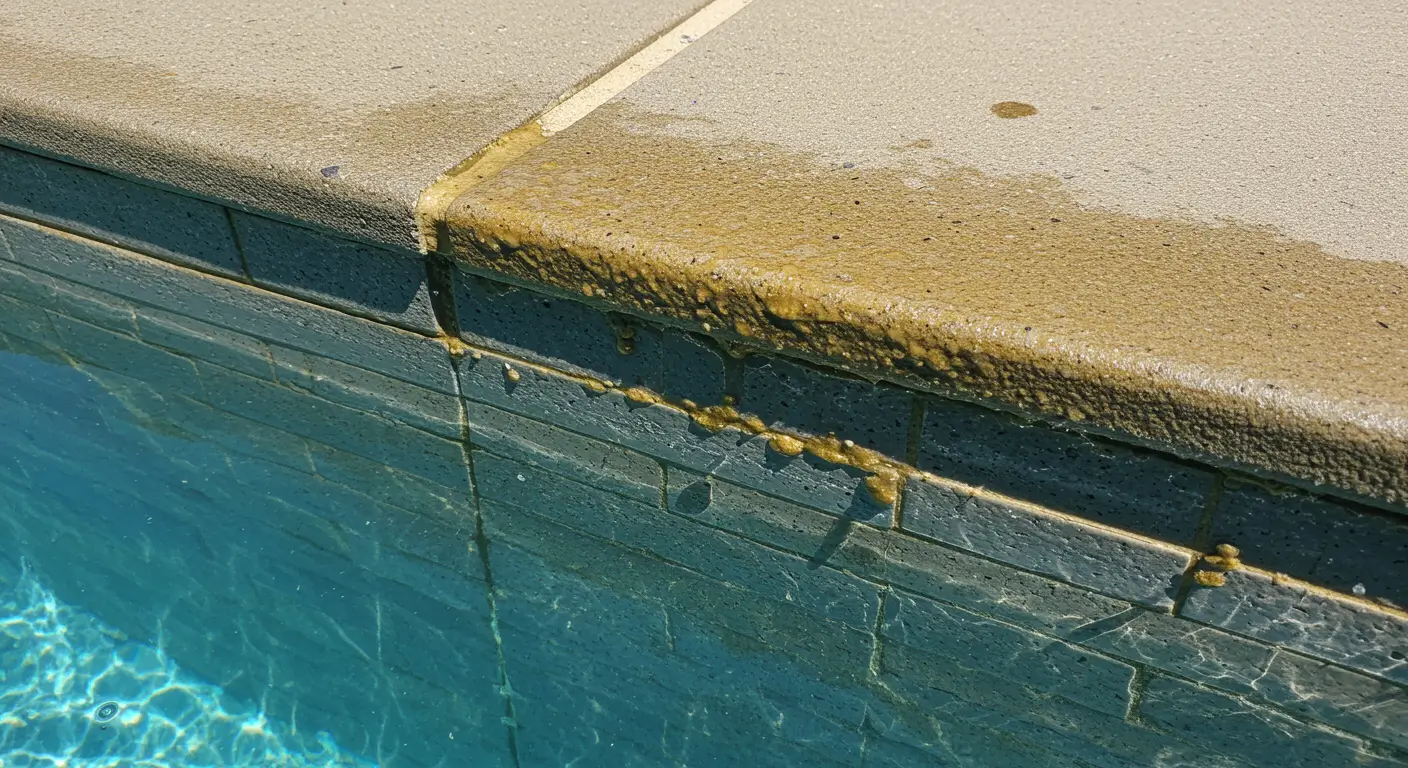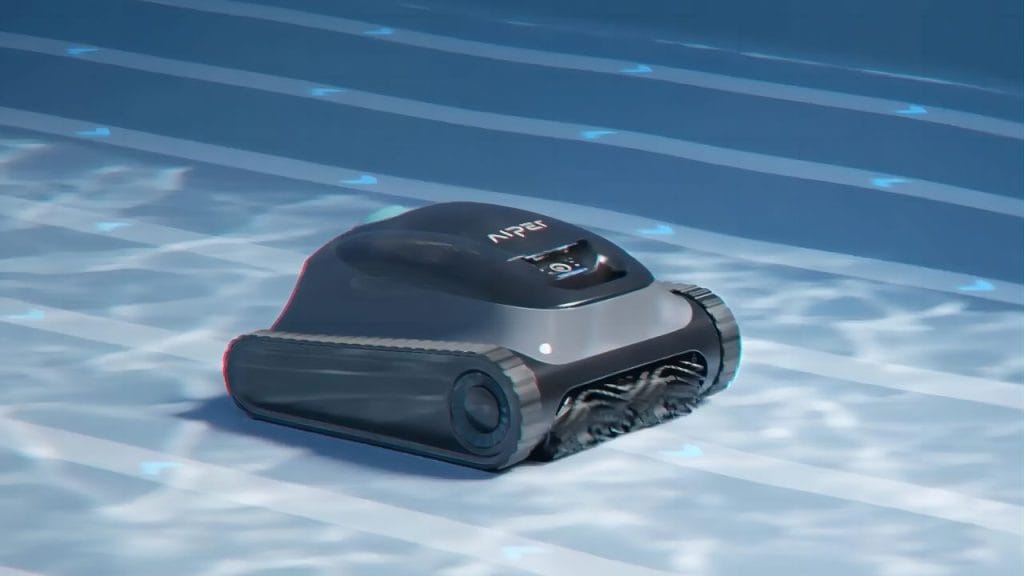What is Pool Biofilm and How to Get Rid of It

Have you ever felt a slimy, slippery coating on your pool walls or tiles, even immediately after running your pump or adding chemicals? That frustrating feeling isn't just regular dirt or grime; it's a highly organized, microscopic fortress known as biofilm.
Biofilm is the number one reason many pool problems—like high chemical consumption and recurring algae—become chronic maintenance nightmares.
This comprehensive guide breaks down what pool biofilm is, why it's resistant to traditional pool chemicals, and introduces the smart technology that puts an end to endless scrubbing—featuring advanced, targeted solutions from Aiper.
Biofilm 101: The Science Behind the Slime
To defeat this microscopic enemy, you first need to understand how it operates. Biofilm is a survival mechanism used by microorganisms, primarily bacteria, to protect themselves from hostile environments.
What is Biofilm?
A biofilm is a protective, self-made community of microorganisms (bacteria, algae, and fungi) that permanently attaches itself to a wet surface.
To build this fortress, the microbes secrete a sticky, glue-like substance called the Extracellular Polymeric Substances (EPS). The EPS matrix acts as their armor, cementing them to the surface and to each other.
- EPS, The Protective Armor: This sugary, protein-rich matrix is incredibly tough and highly water-resistant. In the pool environment, the EPS shield is the primary factor that prevents sanitizers from reaching the microbes inside.
- A Universal Problem: Biofilm isn't unique to pools. Dental plaque on your teeth, the slime in your kitchen drain, and the slippery feel on river rocks are all forms of biofilm. In pools, it loves to colonize tiles, ladders, and especially the hard-to-reach areas of the internal plumbing system.

Why Biofilm is a Nightmare for Pool Owners
Biofilm is more than just an aesthetic annoyance; it’s an active threat to your pool’s chemistry, equipment, and health. It’s built to survive routine sanitization.
- Extreme Chlorine Resistance: The EPS shield makes the microbes inside up to 400 times more resistant to standard chlorine levels than free-floating bacteria. The chlorine simply cannot penetrate the fortress to kill the organisms.
- Constant Sanitizer Demand: Biofilm actively consumes the sanitizer in your pool water, leading to rapid drops in your chlorine or bromine readings. This forces you to use more chemicals just to maintain baseline levels, spiking your operating costs.
- Algae and Pathogen Hiding Spot: Many types of stubborn, recurring algae (like the tough-to-kill black algae) thrive within the protection of a biofilm layer. More dangerously, official health sources confirm biofilm harbors harmful pathogens.
- Equipment Damage and Flow Restriction: Biofilm buildup inside pipes, hoses, and filters restricts water flow. This forces your pump to work harder, decreasing its efficiency, increasing energy costs, and potentially shortening the lifespan of your expensive filtration equipment.
According to a health advisory from Hamilton County, Indiana, biofilm provides a safe haven for dangerous bacteria. This includes bacteria like Legionella, which is connected to respiratory illness, and Pseudomonas aeruginosa, which is a major cause of Swimmer's Ear. When this biofilm comes off, these germs go straight into the water, which is really bad for your health.
How to Tell if Your Pool Has Biofilm? (The Risk Checklist)
If you suspect this microscopic fortress has taken hold in your pool, use this simple checklist to determine your risk level.
|
Symptom |
Description |
Yes / No |
|
Slimy Surfaces |
Do the pool walls or steps feel smooth or slick even after a recent chlorine shock? |
|
|
Rapid Chemical Drop |
Does your free chlorine level drop to zero faster than usual, forcing you to constantly add sanitizer? |
|
|
Waterline Buildup |
Does a greasy or oily scum line repeatedly form around the perimeter of the pool? |
|
|
Algae Recurrence |
Do you experience the same patches of algae (especially stubborn black or mustard algae) returning quickly after treatment? |
|
|
Flow/Odor Issues |
Does your filtration system show reduced flow rate, or do your equipment lines sometimes have a slight, musty odor? |
Result Analysis: If you answered “Yes” to two or more of these questions, your pool is highly likely infested with a mature biofilm colony. Chemical maintenance alone will not be enough; you need a strategic, physical solution.

How to Get Rid of Biofilm in Pool (Physical vs. Chemical)
To get rid of pool biofilm for good, you need to use both chemicals and physical methods. The chemicals will clean the water, and the physical methods will break up the structure.
Chemical Approach: Why Sanitizers Alone Fail
Chemical procedures, such as regular chlorination and shock treatments, are the most important way to keep water clear and eliminate germs that are floating around in it. The EPS barrier, on the other hand, is a major problem with the chemical-only strategy. The biofilm's protective matrix keeps the microorganisms safe, no matter how much chlorine you put in the water. To really get rid of the biofilm, you have to get the sanitizer to the germs underneath it. Chemicals just can't achieve this by getting inside.
Physical Disruption: Actively Scrubbing the Waterline
Since chemistry fails to penetrate the protective matrix, the only way to expose the trapped bacteria is through physical scrubbing and agitation to shatter the EPS layer. Unfortunately, this required exhausting, continuous manual brush work in the past. The hardest area to clean—and the area most prone to biofilm buildup—is the waterline, where oils, sunscreen, and organic debris accumulate.
Smart robotic cleaners, particularly models like the Aiper Scuba X1 Pro Max, are designed with active scrubbing components. Crucially, they feature horizontal waterline cleaning. This dedicated mode applies consistent, sustained friction along the pool's perimeter, providing the necessary mechanical force to disrupt and break down the thickest biofilm layers that manual brushing often misses or skips.

Advanced Filtration: Capturing and Eliminating Biofilm Debris
Disruption of the body is only half of the battle. After the biofilm is broken up, the tiny pieces, dead bacteria, and dissolved EPS must be removed right away so they don't settle and grow back.
The Aiper robotic pool cleaners have strong suction and high-efficiency filters. This makes sure that the small debris and particles that are left over after the biofilm is broken up are caught and kept in the filter basket instead of going back into the pool and feeding new development. Also, smart navigation, like Aiper's WavePath™ Navigation technology, makes sure that the robot covers every square inch of the pool—floor, walls, and waterline—so that no "safe zone" or biofilm refuge is left that could let growth start up again.
Biofilm Prevention: Making Your Routine Smarter
Fighting biofilm is an ongoing battle, but Aiper helps you win it effortlessly through smart, consistent maintenance.
- Maintain Water Chemistry: Always ensure your pH (ideally 7.4–7.6) and sanitizer levels are correct. Use a chemical shock treatment regularly to sanitize the water after you have physically disrupted the biofilm.
- Regular Robotic Cleaning: Use your pool cleaner at least 2–3 times a week, year-round. Focus on modes that specifically clean the walls and waterline to maintain consistent disruption.
- Clean the Filter Basket: Crucially, empty and thoroughly rinse the robot's filter basket after every cleaning cycle. This ensures you are physically removing the captured biofilm particles, nutrients, and potential pathogens from the system.
FAQs About Biofilm Removal and Prevention
Q: Can I use algae killer (algicide) to remove an established biofilm?
A: Algicides are made to kill algae cells that are floating around in the water. Like chlorine, they can't get through the thick EPS matrix that protects the organisms attached to the surface, therefore they don't work well against mature biofilm. The only way to get rid of biofilm is to scrub it physically.
Q: How long does it take for a biofilm to form in a clean pool?
A: Biofilm can start to form fairly quickly. In the correct conditions (warm water, nutrients from oils or debris, and not being scrubbed regularly), the first stage of attachment can happen in just a few hours. This can lead to the production of micro-colonies and the start of the EPS matrix in just a few days to weeks.
Q: Is dental plaque the same thing as pool biofilm?
A: Yes, both dental plaque and pool slime are types of biofilm. They function using the exact same protective mechanism (the EPS matrix), but the specific microbial species involved are different. The core principle—a protective, attached microbial community—is identical.
Conclusion: Clean Smart, Not Hard
Biofilm is the quiet, tough enemy that makes it hard to keep a pool clean. It costs a lot of money in chemicals and can be bad for your health. It’s tough, but it’s not unbeatable.
By understanding the flaw in the chemical-only defense, you can upgrade your strategy. Combining correct water chemistry with the consistent, targeted scrubbing power and superior filtration of an Aiper robotic pool cleaner is the most effective way to shatter the microbial fortress and keep your pool surfaces truly clean, healthy, and slime-free.
Ready to say goodbye to the slime forever? Explore the Aiper to discover the future of effortless, truly deep pool cleaning today!

